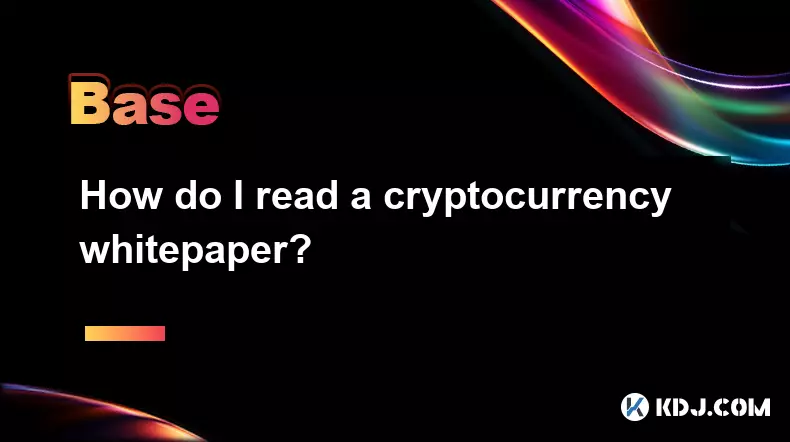-
 bitcoin
bitcoin $114320.977035 USD
-0.40% -
 ethereum
ethereum $4152.439985 USD
-1.75% -
 tether
tether $1.000111 USD
-0.04% -
 xrp
xrp $2.843037 USD
-1.63% -
 bnb
bnb $1013.349380 USD
-1.62% -
 solana
solana $208.362767 USD
-2.10% -
 usd-coin
usd-coin $0.999783 USD
0.00% -
 dogecoin
dogecoin $0.232559 USD
-1.00% -
 tron
tron $0.333491 USD
-1.09% -
 cardano
cardano $0.806310 USD
0.19% -
 hyperliquid
hyperliquid $45.023720 USD
-1.59% -
 ethena-usde
ethena-usde $1.000819 USD
-0.06% -
 chainlink
chainlink $21.241249 USD
-2.11% -
 avalanche
avalanche $30.035416 USD
-0.66% -
 stellar
stellar $0.364984 USD
-2.05%
What is a blockchain's consensus mechanism?
A blockchain’s consensus mechanism ensures trust and security by enabling decentralized nodes to agree on transaction validity, preventing fraud like double-spending.
Sep 15, 2025 at 11:18 pm

Understanding Blockchain Consensus Mechanisms
1. A blockchain's consensus mechanism is a protocol that ensures all nodes within a decentralized network agree on the validity of transactions. Without a central authority, this agreement is essential to maintain trust and prevent fraudulent activity such as double-spending. The mechanism acts as the backbone of the blockchain’s integrity, enabling participants to reach a unified state of the ledger despite potential malicious actors.
2. Different blockchains implement various consensus models based on their goals, such as scalability, security, and decentralization. These models dictate how blocks are created, validated, and added to the chain. Participants in the network, whether miners, validators, or stakers, follow strict cryptographic rules to contribute to the consensus process.
3. The consensus mechanism also plays a crucial role in incentivizing honest behavior. Nodes that follow the protocol are typically rewarded with cryptocurrency, while those attempting to manipulate the system face economic penalties or exclusion. This balance of rewards and risks helps maintain network stability and long-term reliability.
4. One of the earliest and most well-known consensus mechanisms is Proof of Work (PoW), used by Bitcoin. In PoW, miners compete to solve complex mathematical puzzles, and the first to solve it gets the right to add a new block. This process requires significant computational power and energy, which contributes to the network’s security but raises environmental concerns.
5. Another widely adopted model is Proof of Stake (PoS), utilized by Ethereum 2.0 and several other modern blockchains. Instead of relying on computational work, PoS selects validators based on the amount of cryptocurrency they hold and are willing to 'stake' as collateral. This reduces energy consumption and allows for faster transaction processing.
Key Types of Consensus Algorithms in Use Today
1. Proof of Work (PoW) remains foundational in the cryptocurrency space. It is highly resistant to attacks due to the cost of acquiring and operating mining hardware. However, its energy-intensive nature has led many newer projects to explore alternatives.
2. Proof of Stake (PoS) improves efficiency by eliminating the need for energy-heavy computations. Validators are chosen probabilistically based on their stake, and malicious behavior results in losing part or all of their staked funds—a process known as slashing.
3. Delegated Proof of Stake (DPoS) takes PoS a step further by introducing a voting system. Token holders vote for a limited number of delegates who are responsible for validating transactions. This increases transaction speed but may reduce decentralization due to the smaller number of active validators.
4. Proof of Authority (PoA) relies on approved, identity-verified validators who take turns producing blocks. This model is often used in private or consortium blockchains where trust among participants is pre-established, offering high throughput and low latency.
5. Proof of History (PoH), used by Solana, introduces a cryptographic clock that timestamps transactions before they are added to the blockchain. This allows for greater scalability by reducing the time needed for nodes to reach agreement on the order of events.
Impact of Consensus Mechanisms on Network Performance
1. The choice of consensus mechanism directly affects transaction speed and finality. For example, PoW networks like Bitcoin confirm transactions in about 10 minutes per block, while PoS-based systems can achieve finality in seconds.
2. Scalability is another critical factor influenced by consensus design. Networks using PoW often face bottlenecks during high demand, leading to increased fees and slower processing. In contrast, PoS and its variants can handle higher throughput by streamlining validator selection and block creation.
3. Security models vary significantly across mechanisms. PoW’s security stems from the enormous cost of launching a 51% attack, whereas PoS secures the network by making attacks financially self-destructive through staking penalties.
4. Decentralization levels differ depending on the consensus model. PoW allows anyone with hardware to participate, promoting openness. However, mining pool centralization has become a concern. PoS, while more energy-efficient, may favor wealthy stakeholders, potentially leading to centralization of power.
5. The economic incentives embedded in each consensus model shape participant behavior. Well-designed reward and penalty systems encourage validators to remain honest and online, ensuring consistent network operation and resistance to manipulation.
Frequently Asked Questions
What is the purpose of a consensus mechanism in a blockchain?The purpose is to ensure all participants in a decentralized network agree on the current state of the ledger, validate transactions, and prevent fraud without relying on a central authority.
How does Proof of Stake differ from Proof of Work?Proof of Work requires computational power to solve puzzles and validate blocks, consuming large amounts of energy. Proof of Stake selects validators based on the amount of cryptocurrency they hold and are willing to lock up as collateral, making it more energy-efficient.
Can a blockchain change its consensus mechanism?Yes, several blockchains have transitioned from one consensus model to another. Ethereum’s shift from Proof of Work to Proof of Stake is a prominent example, achieved through a series of network upgrades.
Why is decentralization important in consensus design?Decentralization prevents any single entity from controlling the network, enhancing security, censorship resistance, and trustlessness—core principles of blockchain technology.
Disclaimer:info@kdj.com
The information provided is not trading advice. kdj.com does not assume any responsibility for any investments made based on the information provided in this article. Cryptocurrencies are highly volatile and it is highly recommended that you invest with caution after thorough research!
If you believe that the content used on this website infringes your copyright, please contact us immediately (info@kdj.com) and we will delete it promptly.
- BlockDAG, DOGE, HYPE Sponsorship: Crypto Trends Shaping 2025
- 2025-10-01 00:25:13
- Deutsche Börse and Circle: A StableCoin Adoption Powerhouse in Europe
- 2025-10-01 00:25:13
- BlockDAG's Presale Buzz: Is It the Crypto to Watch in October 2025?
- 2025-10-01 00:30:13
- Bitcoin, Crypto, and IQ: When Genius Meets Digital Gold?
- 2025-10-01 00:30:13
- Stablecoins, American Innovation, and Wallet Tokens: The Next Frontier
- 2025-10-01 00:35:12
- NBU, Coins, and Crypto in Ukraine: A New Yorker's Take
- 2025-10-01 00:45:14
Related knowledge

How does cryptocurrency achieve decentralization?
Sep 30,2025 at 04:37am
Understanding the Foundation of Decentralization in Cryptocurrency1. Cryptocurrency achieves decentralization primarily through the use of blockchain ...

What are some common methods of cryptocurrency market manipulation?
Sep 27,2025 at 02:55am
Wash Trading and Its Impact on Market Perception1. Wash trading involves an individual or entity simultaneously buying and selling the same cryptocurr...

How do I read a cryptocurrency whitepaper?
Sep 27,2025 at 05:54am
Understanding the Structure of a Cryptocurrency Whitepaper1. Begin by identifying the executive summary, which outlines the project’s core vision and ...

Can I recover lost cryptocurrency?
Sep 25,2025 at 08:18am
Understanding the Nature of Cryptocurrency Loss1. Cryptocurrency operates on decentralized networks, meaning there is no central authority to reverse ...

How do I choose a cryptocurrency investment strategy?
Sep 27,2025 at 03:55pm
Understanding Risk Tolerance in Crypto Investing1. Assessing personal risk tolerance is a foundational step when entering the cryptocurrency market. V...

How can I earn passive income from cryptocurrency?
Sep 23,2025 at 10:18am
Staking Cryptocurrencies for Regular Returns1. Many blockchain networks operate on a proof-of-stake (PoS) consensus mechanism, allowing users to earn ...

How does cryptocurrency achieve decentralization?
Sep 30,2025 at 04:37am
Understanding the Foundation of Decentralization in Cryptocurrency1. Cryptocurrency achieves decentralization primarily through the use of blockchain ...

What are some common methods of cryptocurrency market manipulation?
Sep 27,2025 at 02:55am
Wash Trading and Its Impact on Market Perception1. Wash trading involves an individual or entity simultaneously buying and selling the same cryptocurr...

How do I read a cryptocurrency whitepaper?
Sep 27,2025 at 05:54am
Understanding the Structure of a Cryptocurrency Whitepaper1. Begin by identifying the executive summary, which outlines the project’s core vision and ...

Can I recover lost cryptocurrency?
Sep 25,2025 at 08:18am
Understanding the Nature of Cryptocurrency Loss1. Cryptocurrency operates on decentralized networks, meaning there is no central authority to reverse ...

How do I choose a cryptocurrency investment strategy?
Sep 27,2025 at 03:55pm
Understanding Risk Tolerance in Crypto Investing1. Assessing personal risk tolerance is a foundational step when entering the cryptocurrency market. V...

How can I earn passive income from cryptocurrency?
Sep 23,2025 at 10:18am
Staking Cryptocurrencies for Regular Returns1. Many blockchain networks operate on a proof-of-stake (PoS) consensus mechanism, allowing users to earn ...
See all articles










































































